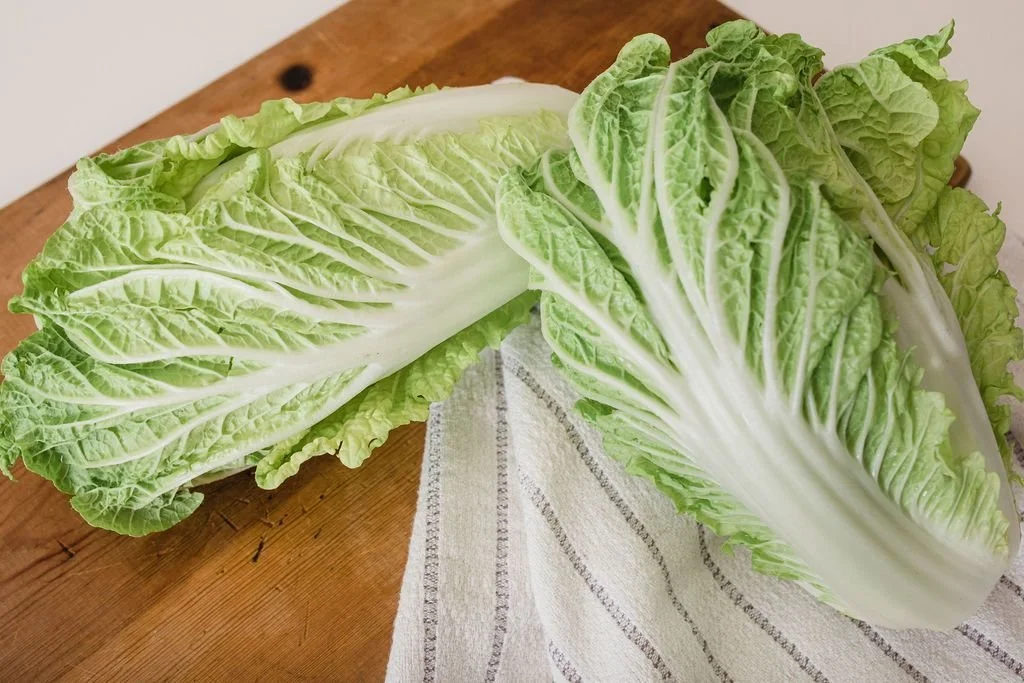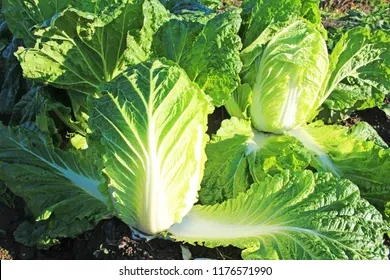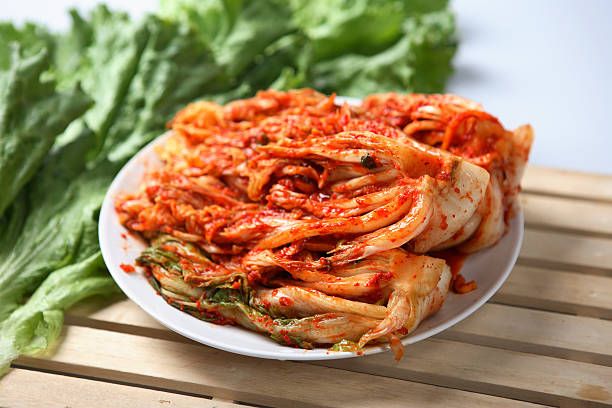HEALTH BENEFITS OF CHINESE CABBAGE


INCREDIBLE CHINESE CABBAGE HEALTH BENEFITS
Delicious Chinese cabbage was originally cultivated in Asian countries, so it’s sometimes referred to as Chinese cabbage. We know it better as napa cabbage, and we also know its name is a form of the Japanese word for vegetable leaves. Chinese cabbage health benefits give the leafy vegetable a very nutritious profile. Its subtle, sweet flavor makes the cabbage a favorite in home and restaurant kitchens. This is a vegetable that brings it all to the table with great taste. Here’s why.
ELEVEN AMAZING FACTS ABOUT CHINESE CABBAGE NUTRITION
With only 20 calories per cup and no cholesterol, napa cabbage boasts a long list of vitamins and minerals. Depending on how napa cabbage is cooked, its nutritional numbers stay strong. The next time you enjoy it raw, pickled or steamed, make the experience even better. Think about all the high DVs of essential nutrients in 1 cup of Chinese cabbage.
1. VITAMIN B6
Vitamin B6 is one of the few vitamins that our bodies can't produce, but it's essential to a healthy metabolism. One cup of Chinese cabbage provides 18% DV of this important nutrient that helps build red blood cells, strengthens neurotransmitters and reduces chronic disease.
2. VITAMIN B9
Chinese cabbage contains high levels of vitamin B9. Just 1 cup delivers 11.75% DV of this important folate. One healthy serving of Chinese cabbage has a positive effect on your heart, circulatory system and red blood cells.
3. ADDITIONAL B VITAMINS
The list of Chinese cabbage benefits includes an outstanding lineup of additional nutrients.Every serving is an opportunity to boost your health with these complex B vitamins.
• Riboflavin
• Pantothenic acid
• Thiamin
4. VITAMIN C
Vitamin C is one of the most important vitamins for maintaining good health.Chinese cabbage is a great source for this antioxidant that improves iron absorption and helps prevent iron deficiencies. Vitamin C also boosts immunity by encouraging white blood cell production.
5. VITAMIN K
Strong bones and healthy blood calcium levels are just a few of the benefits delivered by the vitamin K in Chinese cabbage. The nutrient is essential to producing prothrombin, a protein necessary for healthy bone metabolism.
6. COPPER
One cup of copper-rich Chinese cabbage serves up 11.67% DV of this brain-friendly mineral. Copper keeps neural pathways in top shape, facilitates nerve development and enhances high-level mental activities.
7. IRON
Weighing in with an iron DV of 10.13%, Chinese cabbage is an excellent source of the mineral. It keeps red blood cells healthy so that they can do their job delivering oxygen throughout your body.
8. CALCIUM
Every cup of Chinese cabbage provides 8% DV of calcium. The mineral keeps bones and muscles strong. Bodies don’t naturally produce calcium, so the cabbage plays a vital role in replenishing this essential mineral.
9. MANGANESE
Manganese is a another mineral found in napa cabbage, and it’s also one of the body’s most important antioxidants. A 1-cup serving of Chinese cabbage recharges your system with 9.61% DV of manganese that helps protect against dangerous free radicals and cellular damage.
10. ADDITIONAL ANTIOXIDANTS
In addition to manganese, Chinese cabbage is packed with extra antioxidants.These plant compounds are believed to reduce levels of bad cholesterol and protect the body against cancer.
• Isothiocyanates
• Lutein
• Sulforaphane
• Thiocyanates
• Zeaxanthin
11. DIETARY FIBER
Chinese cabbage is a great source of soluble and insoluble dietary fiber. Both are essential for maintaining digestive health. Together, the nutrients help lower cholesterol levels and stabilize blood sugar.
RAW CHINESE CABBAGE AND COOKED CHINESE CABBAGE: A NUTRITIONAL COMPARISON

Raw Chinese cabbage puts a mild, peppery crunch into salads. Napa chiffonades create crispy toppings for burgers, and the leaves add extra texture to your favorite wraps. Cooked Chinese cabbage stars in traditional kimchi dishes and the latest stir-fry recipes. It's a beloved staple in Southern casseroles, and pairs perfectly with slow-simmered corn beef.
Raw and cooked Chinese cabbage are appreciated by home and professional chefs, but which is considered the healthier choice? Like most uncooked leafy vegetables, one cup of raw Chinese cabbage contains impressive levels of vitamins and minerals, including:
• 26% DV vitamin A
• 16% DV vitamin C
• 50 mg calcium
However, cooked Chinese cabbage still serves a strong lineup of essential nutrients. One cup fills your plate with:
• 4% DV protein
• 10% DV fiber
• 32 mg calcium
There are differences between the nutritional profiles of raw and cooked Chinese cabbage. Still, the overall variations aren't considered significant enough to make one a better choice than the other. Registered dietitians stress that, raw or cooked, leafy vegetables are an invaluable part of a healthy lifestyle.

TRENDING NOW: CHINESE CABBAGE ON RESTAURANT MENUS

Cabbage isn’t the newest vegetable on the block, but it scores very high marks with customers who want a healthy experience dining out. It’s also getting a lot of positive industry attention right now. Chefs across the country are applying their culinary creativity to Chinese cabbage and developing unique dishes.
Wraps, slaws, salads and kimchi are just a few examples of how well this versatile vegetable fits in commercial kitchens. From San Francisco to New York City, the flavors and nutritious benefits of Chinese cabbage are trending strong and enjoying a growing appreciation from health-conscious consumers.
IS CHINESE CABBAGE BETTER FOR YOU THAN REGULAR CABBAGE?
Both are excellent sources of important vitamins and minerals. Regular cabbage contains more calcium, zinc and potassium than napa, but napa cabbage contains higher levels of vitamins A, B3, iron and copper. Napa is also lower in sodium than regular cabbage.
DO YOU EAT CHINESE CABBAGE RAW OR COOKED?
You can enjoy crunchy Chinese cabbage raw in salads, as a sandwich topping and as healthy wraps. The leafy vegetable is also a mainstay in stir-fries, soups, stews and casseroles. Chinese cabbage is a great choice for pickling too.
SHOULD YOU WASH CHINESE CABBAGE?
Don't wash fresh Chinese cabbage before you're ready to use it. Instead, wrap it in plastic, and store it in the refrigerator. As long as napa is properly chilled, the premium cabbage should last for several weeks.
THINGS YOU MAY NOT KNOW: How Chinese Cabbage is loaded with good nutrition including vitamins and minerals.
THINGS YOU MAY WANT TO SAVE: Your life...you heard it here eat more Chinese Cabbage for a healthy lifestyle.
ZENTRAVELER SAYS: Not scintifically proven however: With drug supplies limited, some people are turning to sauerkraut and kimchi to offset bird flu and seasonal flu both made with cabbage. Eat more cabbage raw or cooked like South Koreans kimcki or the Germans sauerkraut and avoid all FLU'S & CANCERS.

From here to Infinity is a relatively short ride! The next leg takes eons and eons as you fly through the Barycentric Dynamical Time Zone! …and on and on and on. Follow the Zentraveler Newsletter often for Travel, Health and Zen-like stories and such. Where else can you get a THREE IN ONE NEWSLETTER FOR THE PRICE OF FREE.

ZENTRAVELER IS A PERSONAL NEWSLETTER, DESIGNED TO GIVE TRAVEL, HEALTH, WRITING AND HUMOR INCLUDING HELPFUL HINTS WITH A ZEN LIKE QUALITY.
PLEASE CHECKOUT MY NEW VIDEO PODCASTS AT ZENTRAVELER ON YOUTUBE...THANKS
